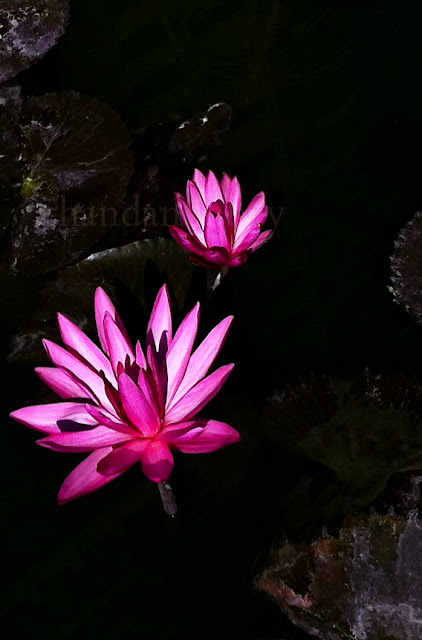Have often contemplated `How to paint a water Lily' a poem by Ted Huges. Far from a naive description of nature, the poem describes a scene of a fight. Behind the quite delicate beauty of the Nymphaeaceae blooms, hidden a real vision of horror. The poem celebrates the beauty of nature, albeit in its violence.
All of which only became clear to me one morning spent at the edge of a pond trying to photograph vivid, bright blooms as they had just begin to climb out of the murky womb of stagnant water. Although there were no dragon flies I think I saw a snake slither in the undergrowth. ( I think ..!)
The squelchy, muddy bank and the slimy, still, slow water. Fishes, fat toads-thawing in the early morning warmth, unlikely companions to the magnificent flowers. The buds themselves having to negotiate the dark pond waters to respond to the beckoning of the early morning sun.
While, any Lily pond will always remind one of what the impressionist genius Monet immortalised on canvas, there is another side to the pond, that is far from a setting of aquatic peace. A whirlpool of natural chaos, a body of water that reflects the heavens as much as the abyss.
This contrast, dual character is inherent to most of nature, only looking at the surface, it is hard to completely imagine what lies beneath. Although the Lily, rich with symbolism is an oft repeated motif in art, poetry, architecture philosophy and religion, it is this contradictory aspect of regeneration amidst chaos, that is most captivating. I came across the work of artist Arpita Singh recently, One of here canvases a Lily pond is used as a reference to depict a war zone, a jigsaw of gun toting soldier, fallen bodies and tanks. Thus highly politicising established ideas of what a Lily pond may or may not symbolise.. It is a way of widening our perspective, opening our eyes to see the complete picture, accepting and pushing the limits of imagination and truth.
To that end on need not stray afar from the waters edge..











